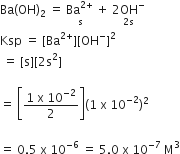In which of the following pairs of molecules/ions, the central atoms have sp2 hybridization?
-
NO2- and NH3
-
BF3 and NO2-
-
NH2- and H2O
-
BF3 and NH2-
B.
BF3 and NO2-
(i) NO2- ⇒ 2σ + 1 lp =3, ie, sp2 hybridisation
(ii) NH3 ⇒ 3σ + 1 lp = 4, ie, sp3 hybridisation
(iii) BF3 ⇒ 3σ + 0 lp = 3, i.e sp2 hybridisation
(iv) NH2- ⇒ 2σ + 2 lp = 4 i.e sp3 hybridisation
(v) H2O ⇒ 2σ + 2 lp = 4 i.e sp3 hybridisation
Thus, among the given pairs, only BF3 and NO2- have sp2 hybridizations.






